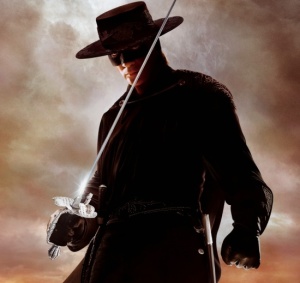“It took them a while to catch on that Batman would be the greatest”
-Bob Kane
Batman is a composite character who draws on a variety of influences, yet stands on his own two avenging feet, having transcended his origins. A vigilante-avenger, or vigilante-detective, the roots of the character contain numerous influences. Pulp adventurers, detectives and proto-supermen and swashbucklers dominated the pulpy prose, mags and funny-books in the late 1800s right up until the end of the 1930s. Then Superheros arrived and sold like hot cakes. The old pulp heroes and swashbucklers never went away, you can still find stories of The Phantom, The Shadow or Robin Hood today in various media.
In his introduction to “Becoming Batman” the ever-amazing author James Kakalios’ (“The Physics of Superheroes”) introduces E. Paul Zehr’s book with a brilliant summary of some of the overt influences on the initial conception of the Batman character:
“Kane’s initial design of a red-costumed, mechanical-winged crime fighter called “Bird-Man” was reworked by colleague Bill Finger into the gray and black clad, mysterious, dark knight detective Bat-Man. Combining the swashbuckling of Douglas Fairbanks, the detective skills of Sherlock Holmes, the dark costuming and socialite alter ego of the Shadow, and the technological utility belt of Doc Savage, Finger and Kane managed to satisfy the editor’s edict, and their creation, now known as Batman, has joined Superman as perhaps the world’s two finest superheroes.”
The Shadow and Doc Savage were both highly influential in the creation of both Superman and Batman. DC Comics in later years would even publish the odd further stories of science hero Doc Savage and masked avenger The Shadow. Batman has even met both those characters, most notably in Denny O Neil’s story, in Batman #253 and #259 where Batman admits to The Shadow that he was his main influence.

The Origins and subtle influences of The Batman though, are not limited to just dime store detective novellas, masked vigilantes and dual persona characters such as the Scarlet Pimpernel. Perhaps the most well known of Batman’s other influences is Zorro. The 1920 film “The Mark of Zorro” starring Douglas Fairbanks was another influence on the creation of Batman. The film was adapted from a story of the same name, and Zorro would continue to appear in print and on the big screen over the decades, right up to the modern era with Antonio Banderas portraying Zorro in two films of varying quality, but still good fun to watch.
Other filmic influences include ‘The Bat’, a play adapted numerous times into film. The 1926 version ‘The Bat Whispers’ of The Bat has the first appearance of the Bat-Signal. Batman’s DNA contains another Bat-themed well known horror character, and the dark knight detective might be able to afford a tailor with that Wayne Fortune (C), but no doubt he stole his fashion sense and headache inducing insomnia habit from Bela Lugosi’s ‘Dracula’ released in 1931. The most obvious visual steal being Batman’s cape – looking just a little too similar to be a coincidence in my opinion.

While the look and attributes of Batman the character come from a mix of different elements, the overall aesthetic of Batman is not complete in my view without a nod to German Expressionism and Film Noir. It is debatable at what point German Expressionism become a core part of the Batman mythos – or if it ever did – and some would argue that particular aesthetic is not a part of the character at all, but just one possible interpretation of the world that Batman inhabits.
The most famous intentional use is Tim Burton’s BATMAN 1989 starring Michael Keaton and Jack Nicholson, with its rich visual palette. Putting aside the strengths and weaknesses of Tim Burton the story teller, Burton the visual stylist is in a league of his own. Burton is an iconoclastic visual stylist, often exploring outsider, loner characters and their isolation from the world and how they reconcile themselves (or fail to) in a world that despises them, Batman being a prime example of this loner character archetype, even if Batman himself ends up getting less screen time than the freaks (villains) in Burton’s two Batman films.
But that dear reader is a post for another BAT-TIME.
…Tune in next time BAT-FAN’s for more on Burton’s take on Batman and the ever amazing visual stylings of the sadly departed artistic genius Anton Furst in BAT-GENIUS: Anton Furst – He Made Nightmares into Reality.




Hey just wanted to give you a quick heads up. The text in your article
seem to be running off the screen in Firefox. I’m not sure if
this is a formatting issue or something to do with browser
compatibility but I thought I’d post to let you know. The layout look great though!
Hope you get the problem resolved soon. Thanks
LikeLike
Thanks. I use google chrome and it shows fine in that on my PC and tablet, I’ll look into the firefox issue, thanks for bringing it to my attention man.
LikeLike